World Press Photo of the Year, Winner
“Crying Girl on the Border” © John Moore, Getty Images
Immigrant families had rafted across the Rio Grande from Mexico and were detained by the authorities. Yana (who was approaching her second birthday) and her mother had been part of a refugee caravan that started its journey in southern Mexico in April. Yana, from Honduras, cries as her mother Sandra Sanchez is searched by a US Border Patrol agent, in McAllen, Texas, USA, on 12 June.
The winners of the year’s most highly anticipated photojournalism contest have been announced. At the April 11 awards ceremony in Amsterdam, American photojournalist John Moore took home the top honor at the 62nd annual World Press Photo Contest. His haunting image of a Honduran toddler wailing as her mother is searched by US Border Patrol in Texas was named 2019 World Press Photo of the Year.
Moore’s imagery sums up the US government’s policy of separating families at the border, reinforcing why the public outcry against these practices was so strong. As a senior staff photographer and special correspondent for Getty Images, Moore has been focusing on immigration and border issues since 2008. It’s thanks to the dedication of Moore and many others that the public is forced to face the reality of political policies and take appropriate action.
“[The photograph] immediately tells you so much about the story,” shares Alice Martins, photojournalist and jury member. “And at the same time, it really makes you feel so connected to it… This picture shows a different kind of violence that is psychological.”
It was Moore’s ability to combine his technical prowess and storytelling capabilities to produce a jarring image that is impossible to look away from that helped him win the prestigious award. Interestingly, issues of immigration at the US border also carried through to the World Press Photo Story of the Year. Pieter Ten Hoopen was awarded the top prize for his photo story titled The Migrant Caravan. The series documents a 7,000-person grassroots migrant caravan from Honduras in a tale of desperation, perseverance, and hope.
“I wanted to cover what it means to be on the road to a new life—or what people hope to become a new life,” Ten Hoopen explains. “I wanted to focus on the human aspects, on relations between the people and how they handle it.”
In addition to the main prizes, individual category winners were named for single images and stories across eight categories. Many of the winning category photographers were also nominated for World Press Photo of the Year, making it clear just how competitive the contest was. Judged by a panel of 17 professionals from six global regions, with an equal balance of men and women, the competition continues its reputation for awarding outstanding talent.
The prize-winning photographs will now embark on a year-long traveling exhibition. Seen by over 4 million people in 45 different countries, the exhibit allows the important global issues documented by these photojournalists to be seen by a wider audience.
The winners of the 2019 World Press Photo contest represent the best of international photojournalism.
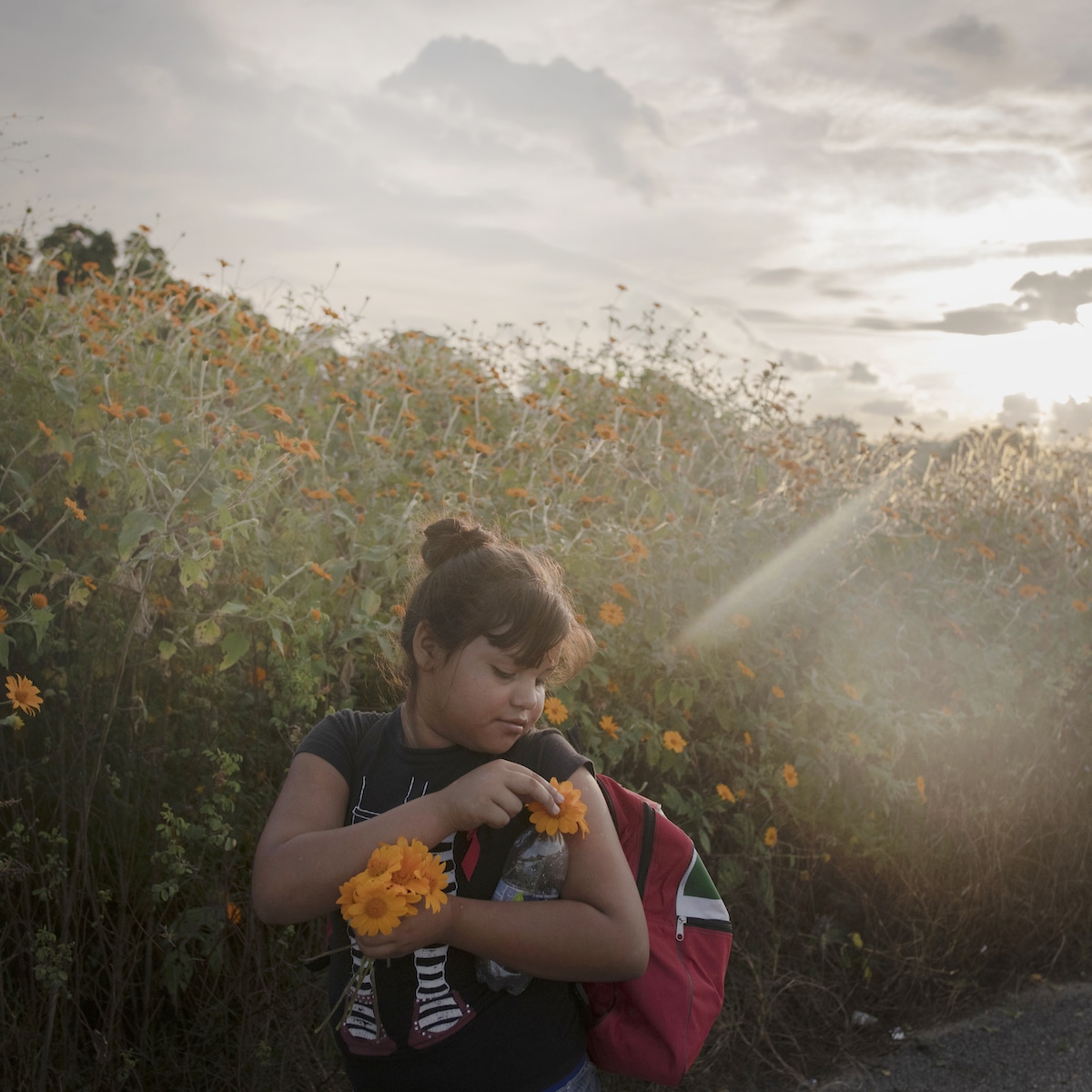
World Press Photo Story of the Year
“The Migrant Caravan” © Pieter Ten Hoopen, Agence Vu/Civilian Act
A girl pick flowers during the day’s walk from Tapanatepec to Niltepec, a distance of 50 km (31 mi).
During October and November 2018, thousands of Central American refugees joined a caravan heading to the United States border. The caravan, assembled through a grassroots social media campaign, left San Pedro Sula, Honduras, on 12 October 2018, and as word spread drew people from Nicaragua, El Salvador and Guatemala. They were a mix of those facing political repression and violence, and those fleeing harsh economic conditions in the hope of a better life. Traveling in a caravan offered a degree of safety on a route where migrants have previously disappeared or been kidnapped, and was an alternative to paying high rates to people smugglers.
Migrant caravans travel to the US border at different times each year, but this was the largest in recent memory with as many as 7,000 travelers, including at least 2,300 children, according to UN agencies. Conditions along the way were grueling, with people walking around 30 km a day, often in temperatures above 30℃. The caravan usually set off at around 4am each day to avoid the heat. Like others, this caravan drew condemnation from US president Donald Trump, who made it a focal point of rallies and used it to reiterate his call for tough immigration policies and the building of a border wall.

General News, Stories, Winner
“Yemen Crisis” © Lorenzo Tugnoli, Contrasto, for The Washington Post
After nearly four years of conflict in Yemen, at least 8.4 million people are at risk of starvation and 22 million people—75% of the population—are in need of humanitarian assistance, according to the UN. In 2014, Houthi Shia Muslim rebels seized northern areas of the country, forcing the president, Abdrabbuh Mansour Hadi, into exile. The conflict spread, and escalated when Saudi Arabia, in coalition with eight other mostly Sunni Arab states, began air strikes against the Houthis. By 2018, the war had led to what the UN termed the world’s worst man-made humanitarian disaster.
Saudi Arabia said that Iran—a Shia-majority state and their rival regional power—was backing the Houthis with weapons and supplies, a charge Iran denied. The Saudi-led coalition implemented a blockade on Yemen, imposing import restrictions on food, medicines and fuel. Resulting shortages exacerbated the humanitarian crisis.
In many cases, conditions of near-famine were caused not so much by the unavailability of food, but because it became unaffordable, priced out of reach to most Yemenis by import restrictions, soaring transport costs due to fuel scarcity, a collapsing currency and other man-made supply disruptions.

Environment, Singles, Winner
“Akashinga – the Brave Ones” © Brent Stirton, Getty Images
Akashinga (‘The Brave Ones’) is a ranger force established as an alternative conservation model. It aims to work with, rather than against local populations, for the long-term benefits of their communities and the environment. Akashinga comprises women from disadvantaged backgrounds, empowering them, offering jobs, and helping local people to benefit directly from the preservation of wildlife. Petronella Chigumbura (30), a member of the all-female anti-poaching unit, participates in stealth and concealment training in the Phundundu Wildlife Park, Zimbabwe.
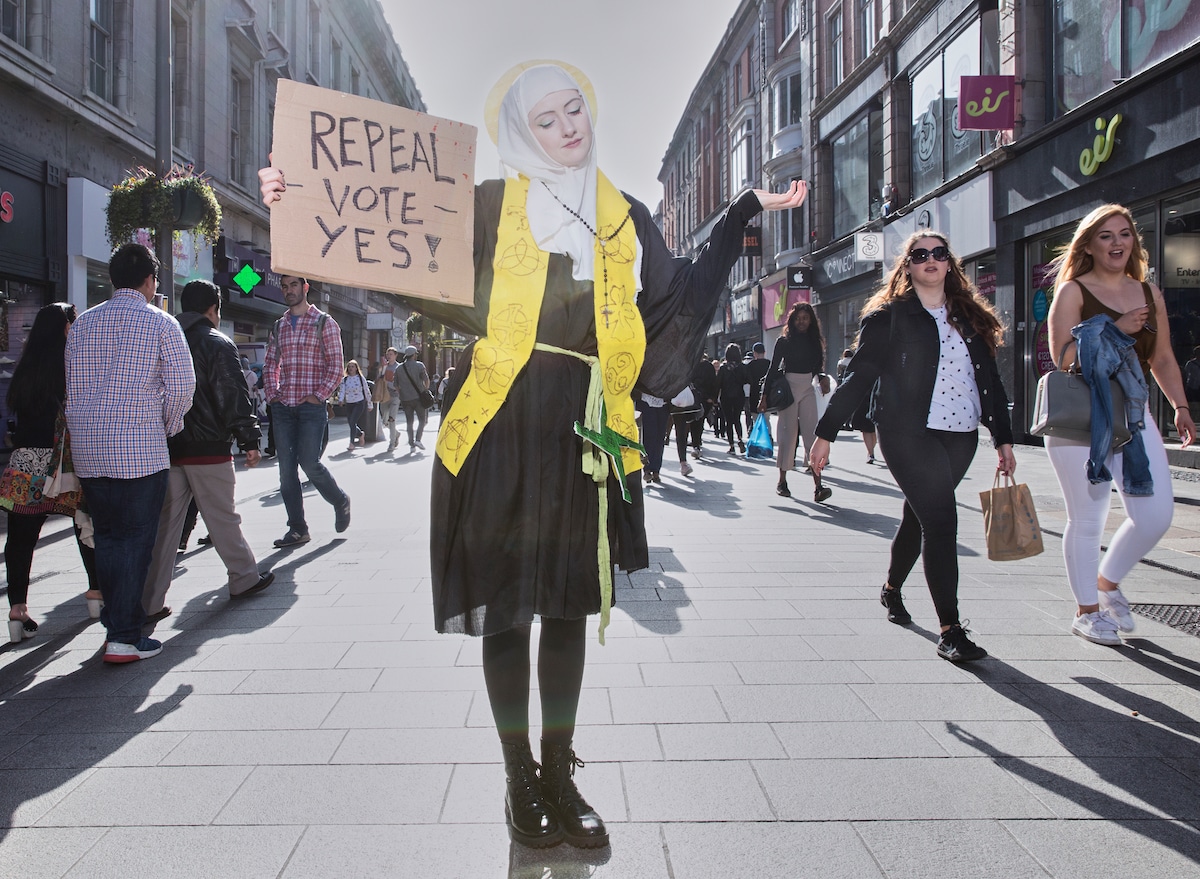
Contemporary Issues, Stories, Winner
“Blessed Be the Fruit: Ireland’s Struggle to Overturn Anti-Abortion Laws” © Olivia Harris
Abortion law reform campaigner Megan Scott, dressed as St Brigid, Ireland’s female patron, poses for a photograph on Dublin’s main shopping street, on 21 April.
On 25 May, Ireland voted by a large majority to overturn its abortion laws, which were among the most restrictive in the world. A 1983 referendum had resulted in an Eighth Amendment to the Irish constitution reinforcing a ban on terminations, even those resulting from rape and incest. Prior to the referendum, an estimated 3,000 women traveled to the UK annually for abortions. In 2012, the death of Savita Halappanavar from sepsis after doctors had denied her a termination, shocked Ireland and galvanized campaigners calling for an end to the ban. Her name became synonymous with the movement to repeal the Eighth Amendment. The campaign broadened, arguing that restrictions on women impact everyone in society, and that the support of men, too, was necessary to effect change. Campaigners used social media platforms to spread their message, and took the argument to the streets in the form of demonstrations and theatrical spectacle. Nearly two-thirds of the Irish population turned out to participate in the referendum, with 66.4 percent voting to overturn the abortion prohibition. By the end of the year, the Irish president had signed a new bill into law, making abortion for any pregnancy less than 12 weeks available without cost.
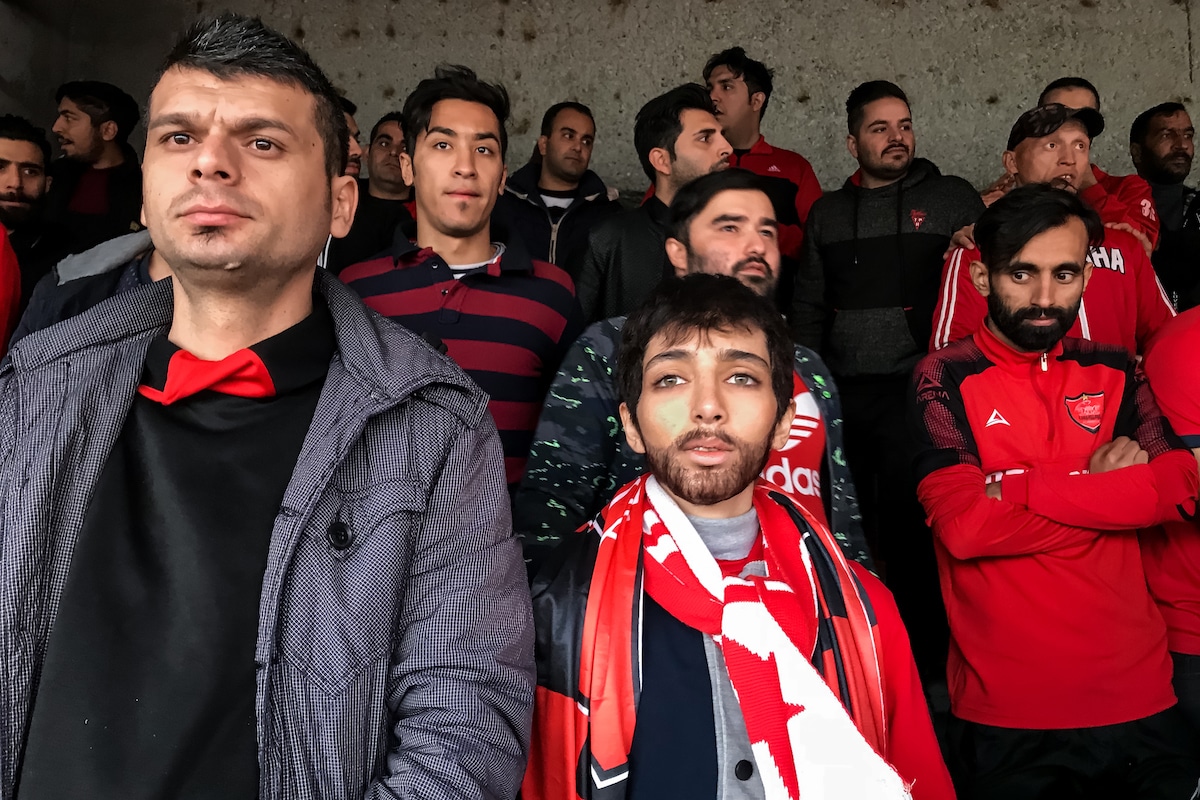
Sports, Stories, Winner
“Crying for Freedom” © Forough Alaei
Zeinab, a 22-year-old girl. It seems strange to men that a girl has disguised herself as men to enter the stadium.
As a female photographer, I’m not permitted to take my camera to the stadium. Therefore, I had to pass myself off as a boy and use my iPhone to take this shot.
In Iran, there are restrictions on female fans entering football stadiums. As football is the nation’s most popular sport, the ban has been a controversial public issue. On 1 March 2018, FIFA president Gianni Infantino met with the president of Iran, Hassan Rouhani, to address the issue. Social-media groups also put the president under pressure, and on 20 June a ruling allowed Tehran’s Azadi Stadium to admit selected groups of women for international matches. The concession to women fans applied only to international matches, and after a senior judicial officer objected in October, it was withdrawn. On 10 November, the FIFA president, who was attending the AFC Cup match in Tehran, asked to be shown that women were being allowed to attend. A selection of women was permitted to enter, though many others were barred.
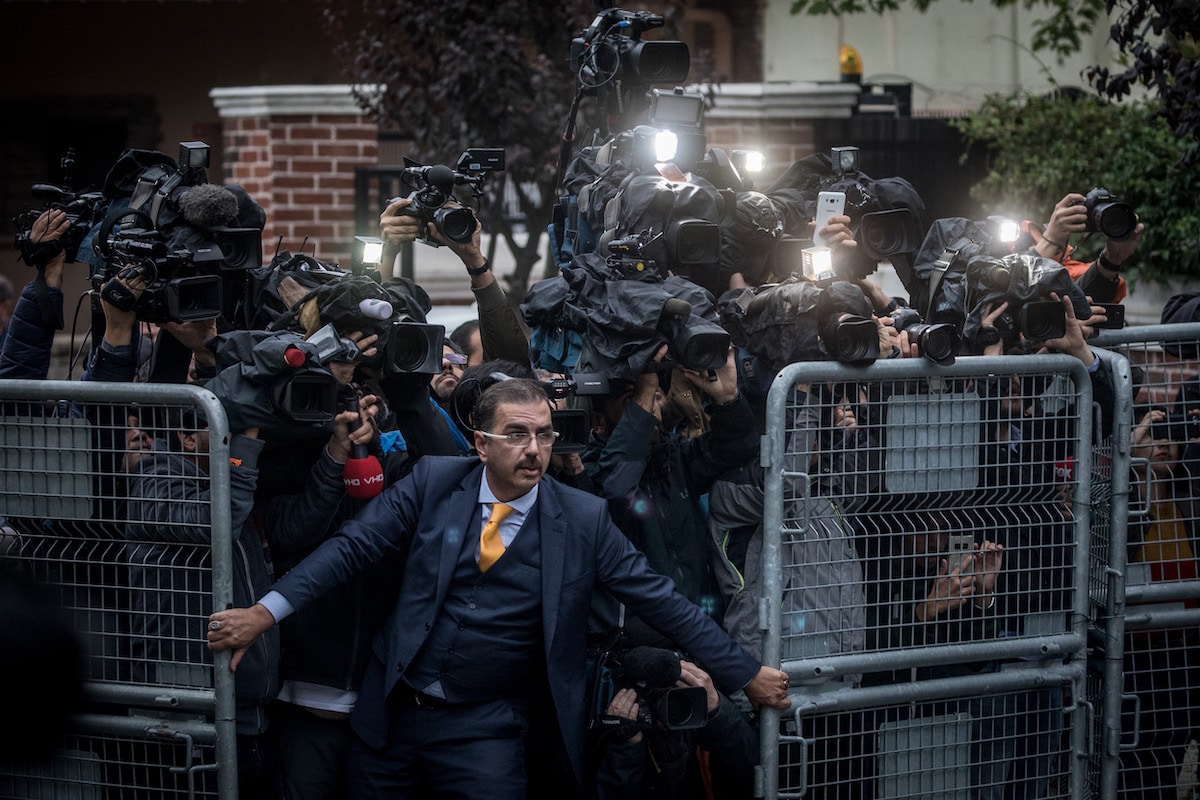
General News, Singles, Winner
“The Disappearance of Jamal Khashoggi” © Chris McGrath, Getty Images
An unidentified man tries to hold back the press on 15 October, as Saudi investigators arrive at the Saudi Arabian Consulate in Istanbul, Turkey, amid a growing international backlash to the disappearance of journalist Jamal Khashoggi.
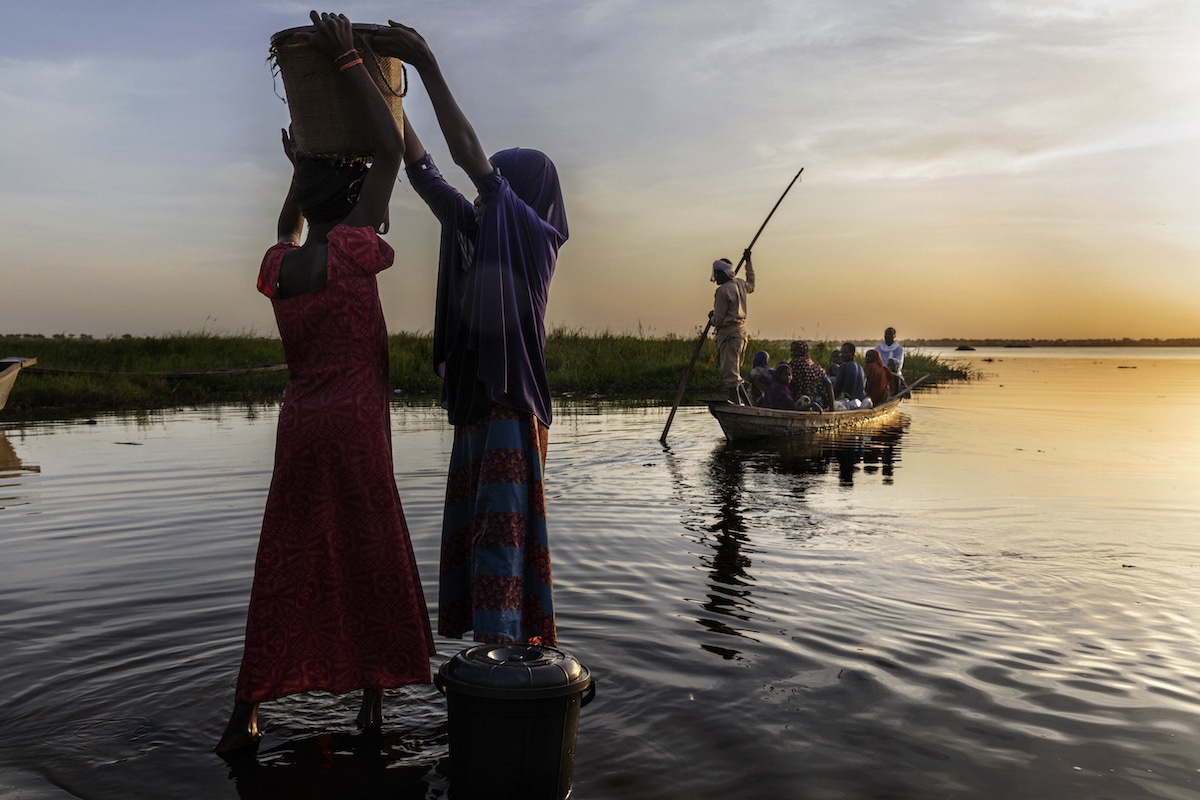
Environment, Stories, Winner
“The Lake Chad Crisis” © Marco Gualazzini, Contrasto
A humanitarian crisis is underway in the Chad Basin, caused by a complex combination of political conflict and environmental factors. Lake Chad—once one of Africa’s largest lakes and a lifeline to 40 million people—is experiencing massive desertification. As a result of unplanned irrigation, extended drought, deforestation and resource mismanagement, the size of the lake has decreased by 90 percent over the past 60 years. Traditional livelihoods such as fishing have withered, and water shortages are causing conflict between farmers and cattle herders. Jihadist group Boko Haram, which is active in the area, both benefits from the hardship and widespread hunger and contributes to it. The group uses local villages as a recruiting ground, and the protracted conflict has uprooted 2.5 million people, exacerbating food insecurity.
Men punt a pirogue through marshy cane thicket at the lake’s edge.
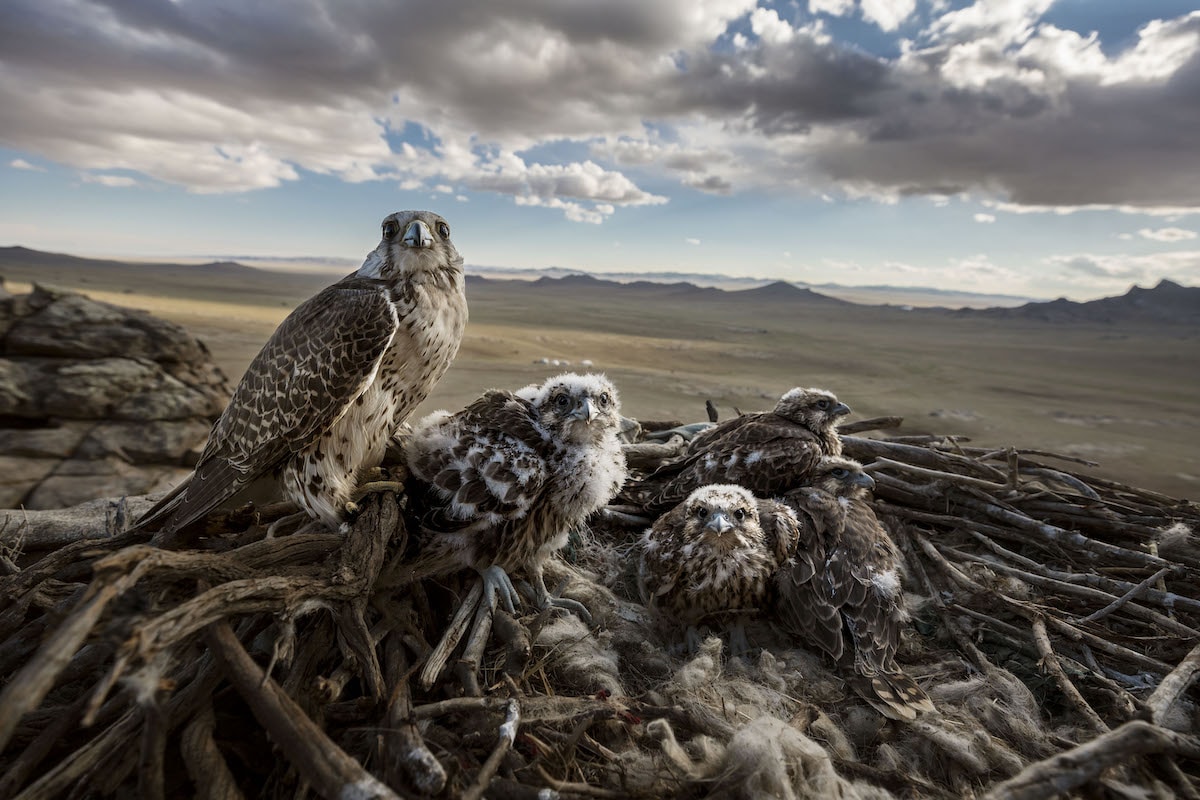
Nature, Stories, Winner
“Falcons and the Arab Influence” © Brent Stirton, Getty Images for National Geographic
A female saker falcon with her chicks in Erdene Sant, Mongolia. Sakers are endangered, due to habitat loss and the illegal wildlife trade.
The millennia-old practice of falconry is experiencing an international resurgence, especially as a result of efforts in the Arab world. UNESCO now recognises falconry as an Intangible Cultural Heritage of Humanity (ICH), a status enjoyed by no other hunting sport. Falcons bred in captivity have helped diminish the trade in captured wild birds, including some species that are listed as endangered. But some falcons in the wild continue to be at risk from capture and other anthropogenic factors such as electrocution on badly designed powerlines, habitat degradation and agrochemicals. Similarly, although the breeding of birds such as houbara bustards for prey has made hunting a more sustainable practice, the British Ornithologists’ Union reported that the wild houbara population continued to decline.
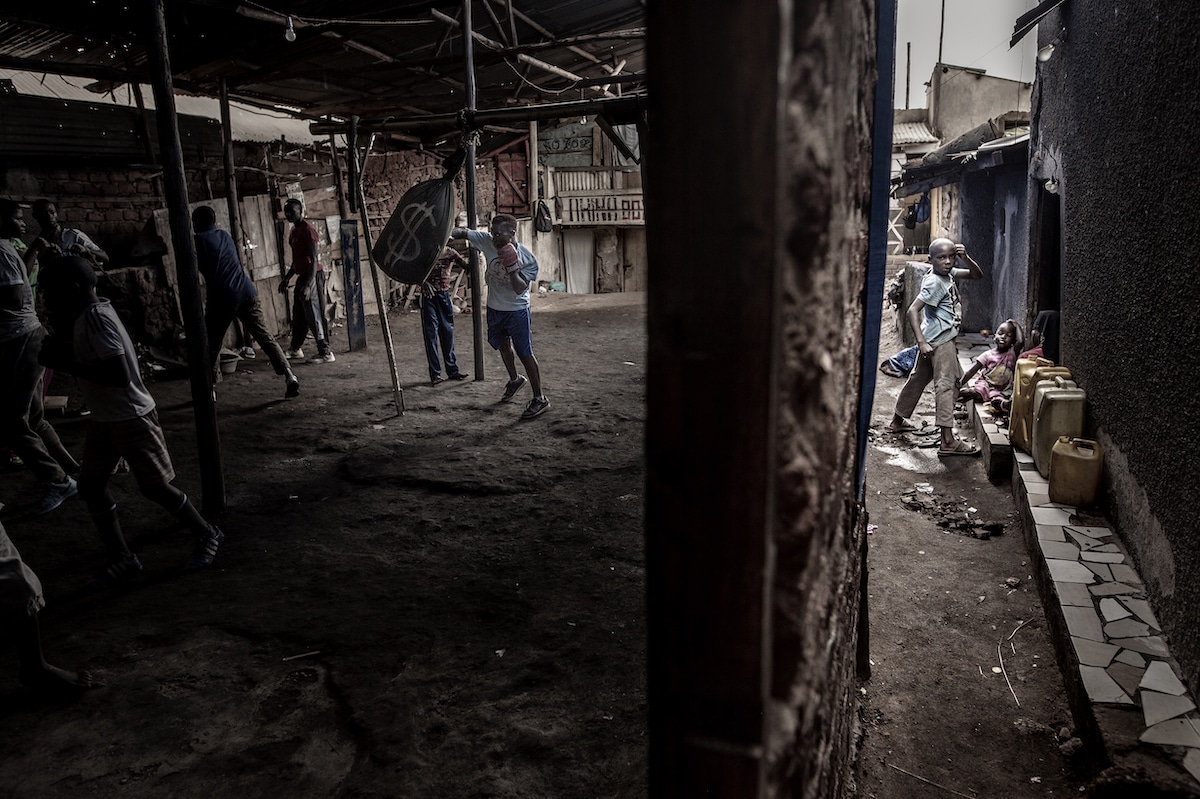
Sports, Singles, Winner
“Boxing in Katanga” © John T. Pedersen.
Boxer Moreen Ajambo (30) trains at the Rhino boxing club in Katanga, a large slum settlement in Kampala, Uganda, on 24 March.
More than 20,000 people live in Katanga, crowded together and often in extreme poverty. The boxing club receives no outside funding. Ajambo, a mother of seven, boxes in the Ugandan women’s team. Men’s boxing has a long history in Uganda, but women boxers are often frustrated by the few opportunities to compete at an international level.
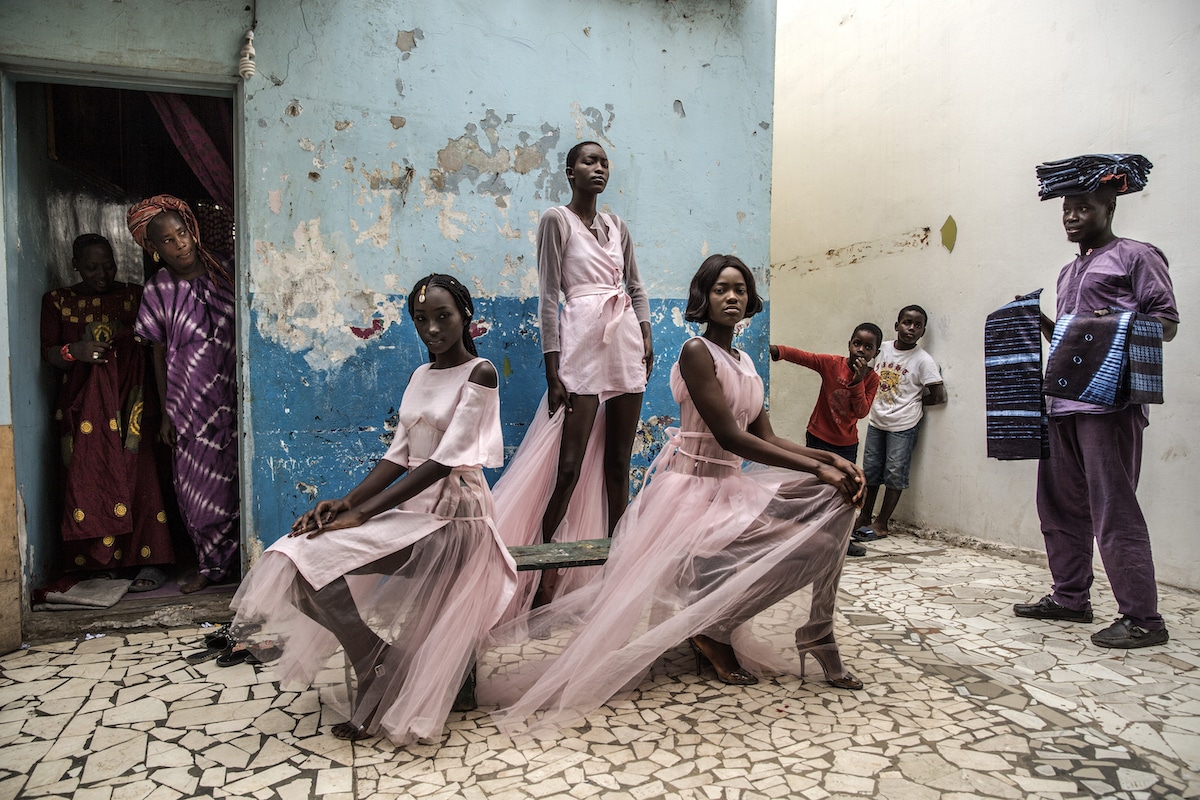
Portraits, Singles, Winner
“Dakar Fashion” © Finbarr O’Reilly
Dakar is a growing hub of Franco-African fashion, and is home to Fashion Africa TV, the first station entirely dedicated to fashion on the continent. The annual Dakar Fashion Week includes an extravagant street show that is open to all and attended by thousands from all corners of the capital. Adama Paris (who has a namesake brand) is a driving force behind the fashion week, and much else on the design scene.
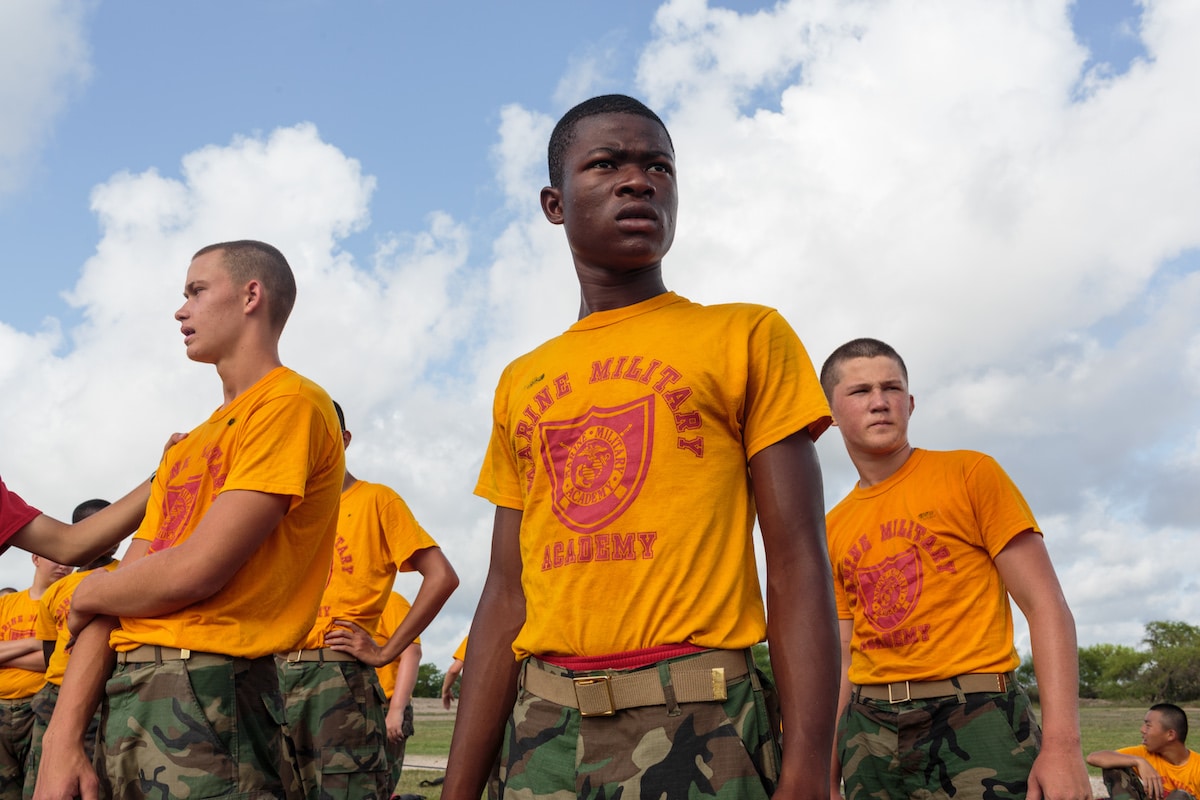
Long-Term Project Nominee
“Beckon Us From Home”
© Sarah Blesener
Participants wait to begin a relay race, at a Marine Military Academy summer camp, Harlingen, Texas, USA. The academy hosts a summer camp for boys between 12 and 18 from around the world.
Patriotic education, often with a military subtext, forms the mainspring of many youth programs in both Russia and the United States. In America, the dual messages of ‘America first’ and ‘Americanism’ can be found not only as a driving force behind adult political movements but around the country in camps and clubs where young people are taught what it means to be an American. In Russia, patriotic clubs and camps are encouraged by the government. The photographer visited ten youth programs in the US, as well as schools and military summer camps in Russia.
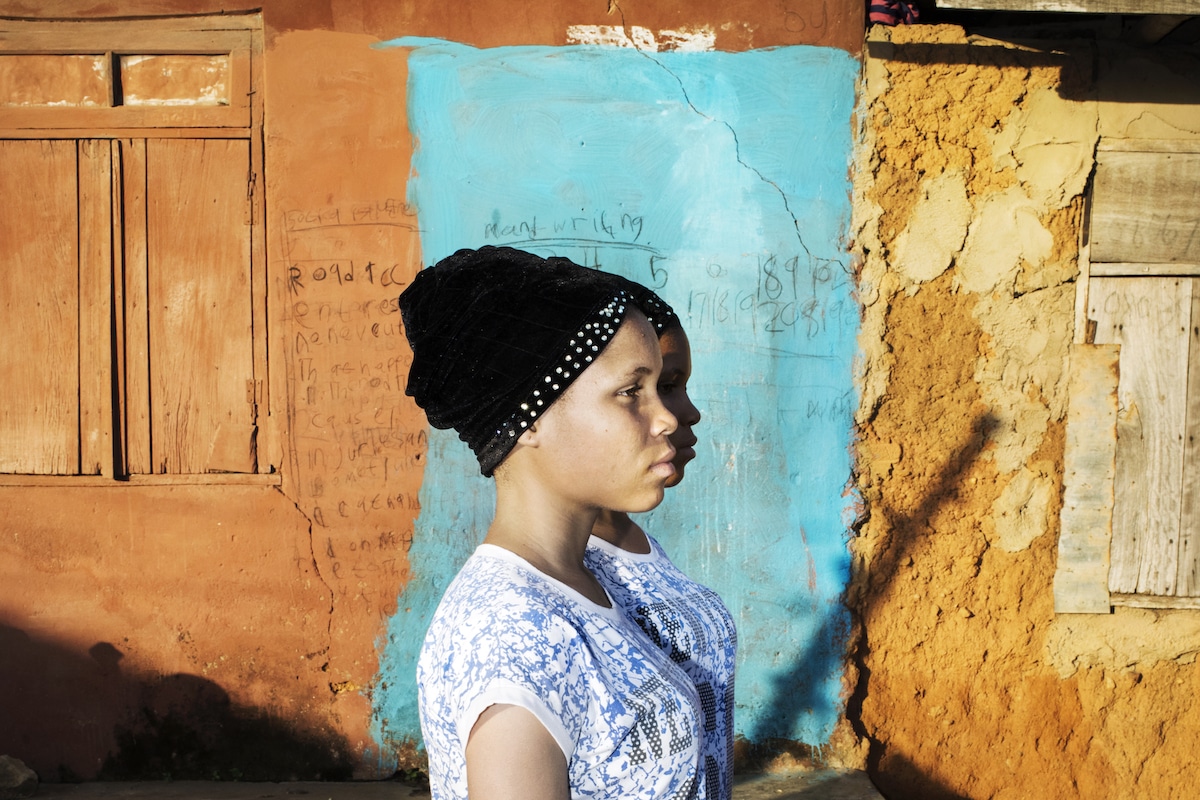
Portraits, Stories, Winner
“Double Trouble, Blessed Twice” © Bénédicte Kurzen, Noor and Sanne de Wilde, Noor
Nigeria has one of the highest occurrences of twins in the world, particularly among the Yoruba people in the southwest. Communities have developed different cultural practices in response to this high birth rate, from veneration to demonization. In earlier times, twins in some regions were considered evil and vilified or killed at birth. Nowadays, the arrival of twins is generally met with celebration, and many think they bring good luck and wealth. In the southwestern town of Igbo-Ora, dubbed ‘The Nation’s Home of Twins’, reportedly almost every family has at least one set. In 2018, the town hosted a Twins Festival, attended by over 2,000 pairs. Two color filters were used, to express duality: of identity, of photographers, and of attitude to twins.
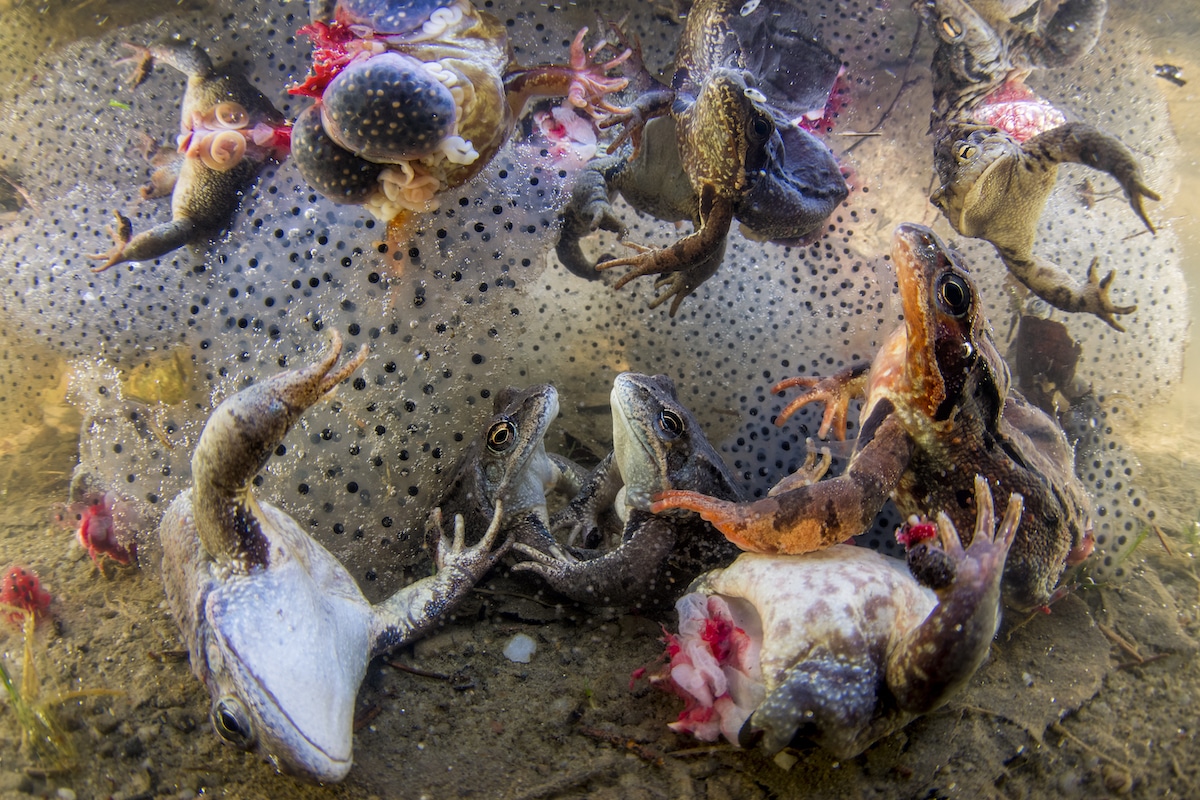
Nature, Singles, Winner
“Harvesting Frogs’ Legs” © Bence Máté
Frogs with their legs severed and surrounded by frogspawn struggle to the surface, after being thrown back into the water in Covasna, Eastern Carpathians, Romania, in April 2018.
Frogs’ legs are frequently harvested for food in the spring, when males and females gather to mate and spawn. Legs are sometimes severed while the animal is still living. About US$40 million worth are sold annually, with countries across the world participating in the trade. A small part of the population in the Carpathian Mountains make their living by collecting frogs’ legs in the wild and selling them.
mymodernmet.com







0 comments :
Post a Comment